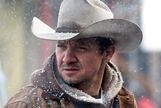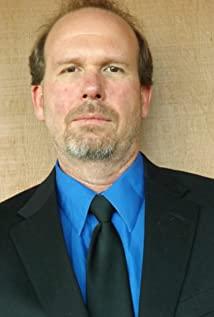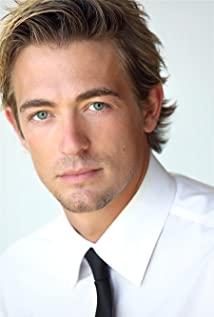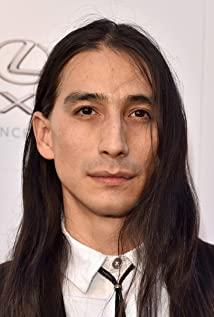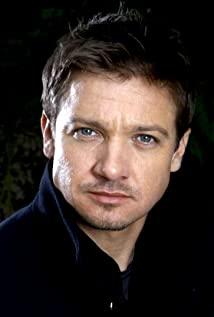The core story of "Hunting the Wind River Valley" is a murder of a young girl, which occurred in the Wind River Valley Indian Reservation in Wyoming. Natalie was found frozen to death in the snow far from home on the second day after dating her boyfriend, and had been beaten and sexually assaulted during her lifetime. It was the hunter Corey (Jeremy Renner), the father of the victim's friend, who found the body. Corey's daughter was also killed three years ago, and the murderer has not been caught. In order to avenge Natalie and make up for his original "fault", Corey chose to help the fledgling FBI agent Jane (Elizabeth Olsen) track down the murderer.
Justice is hard to reach
The role of the film continues the model of the director's screenplay "Border Killer": sophisticated experts and novice female agents, one who believes in the ancient law of tooth for tooth, and the other looking forward to continuing to follow order and procedural justice in the wilds. As an "intruder", Jane is like the eyes of the audience, leading us to observe the life of the reservation, to understand the plight of the Indians, and more importantly, to understand and finally acquiesce in Corey's actions. Unlike the long-standing values entanglement in "Border Killer", the two partners in "Hunter" soon achieved a complete unity, which was very politically incorrect and turned to the lynching party.
The legitimacy of "lynching" comes from the ineffectiveness of procedural justice and the inability to do anything against evil. This is not a complicated case, but throughout the investigation of the case, there is always an implicit force that hinders the realization of justice. The murder case happened but only a rookie agent was sent; because of jurisdiction issues, Jane could not seek foreign aid before the nature of the case was confirmed; the vast reserved area was equipped with only six policemen... It is this kind of "ignorance", this kind of essence The living situation of being "exiled" consumes people's hope and makes reservations more and more out of the law.
Through the ending subtitles, we learned that there are many Indian women who are violated and lost contact each year on the reservation, but few receive assistance or legal rulings, and no one even knows the specific case data, because American Indian women are not listed. Included in the compilation of missing persons statistics.
The film does not put too much pen and ink on the investigation of the case and the fight between the police and the robbers. Instead, it spends a lot of energy and delicately presents the faces of sentient beings connected by a tragedy. Through their response to the disaster, a murder is extended to To the suffering of an ethnic group.
When the director explained the theme of the film, the film essentially studies how a person can come out of a tragedy, rather than indulge in it. Broadly speaking, it is about the consequences of forcing people to live in a land that they have never thought of.
We are often just shocked by evil methods, and the more difficult to let go of doubts are the source of evil, "Why?"
The film tries to find some answers from the past.
Trapped person
Wyoming is the state with the smallest population but the highest percentage of Indians in the United States. The vast majority of them live in the Wind River Valley Indian Reservation, which is the place where the crime in the film occurred.
The concept of reserved land has been closely linked to the history of the United States since before the nineteenth century. In order to occupy a large amount of land, restrict the development of Indian tribes, and ease the conflict between whites and Indians, the US government forced Indians to move to the harsh west and divided them into "reserved areas" by tribe.
In the early days of "reservations", there was a strong color of concentration camps, until the Indians were officially recognized as American citizens in 1924, the tribes received "limited autonomy", and the government dealt with them through the Indian Affairs Administration. At present, there are still hundreds of reservations in various states in the United States.
Because of the harsh environment and poor management, the reserved area is more like an "abandoned" corner. Those trapped in it either try to get out through the scarce channels such as conscription and exams, or they are completely perverted under the influence of alcohol and drugs with the resentment that has nowhere to dissolve. Natalie's younger brother represents the young people who live here and see no hope.
Except for the isolated Indians, the white people who came here were almost all the people at the bottom, bringing the consciousness of being exiled into this barren land. The frustrated anger in life can easily develop a desire for destruction in a barren environment. The film gave the murderer an opportunity to speak out about his pain. "In this icy and snowy ghost place, nothing can be done, nothing! There is no sound!" This does not justify his crime, but it also shows the impact of the environment on people.
Failed hero
Corey the Hunter represents another possibility.
The film uses a lot of space to enrich the image of Corey, a silent, reliable, and determined man. Facing fate, he didn't believe that there would be a turn for the better, and his sense of fate permeated the characters, showing an extremely restrained emotional expression. But below the calm surface is the determination to revenge and redeem. "Your strength, your spirit, determine your destiny. What the wolves kill is not the unlucky deer, but the frail deer. You fight to save your life." This set of values that seem to eat the weak. When spoken by the strong, it is strongly aggressive, but when spoken by a deprived person, it is just a persistence to guard oneself: facing hardships to maintain the final dignity.
His way of resisting the predicament is not sinking nor anger, but "guarding." Guard the tradition, guard the memory.
The whispers that keep appearing in the film come from a composition written by Corey’s daughter, “And your loving eyes are out of reach. I’m here again, closing my eyes.” Corey repeated these words. Like a prayer. There is another sentence in the composition: "Here, in the cradle of everything I love, I guard every memory of you." His hope is to preserve the beautiful things, including memories of his daughter. There is also a tradition he trusts. In the opening chapter, Corey teaches horse riding to his young son who loves nature, which can be seen as the inheritance of this “guardian”.
"How did you feel just now?" "Is it a cowboy fan?" "No, my son, it's Arapahoefan. (Indian tribe name)"
The only thing that makes people care about this part is that Corey, as the guardian, is actually a white man. Because this white identity did not play much theatrical role in the play, Corey’s empathy for Indians and the sense of fate derived from the ethnic group did not have a strong enough support. Although Jeremy Renner's performance was outstanding.
Modern westerns
The film starts with a murder case, draws out the current life of the Indians, and successfully expands the theme. But simply "value" does not guarantee that it will be a good movie. "Hunting the Wind River Valley" also has many wonderful places in its audio-visual expression.
Director Taylor Sheridan’s work is usually divided into the category of "modern westerns", and he is also keen on telling western stories, but it is different from the romantic heroism of traditional westerns. The theme is darker and the characters have anti-hero tendencies. The depiction with the Mexicans is also more sympathetic.
This strictly directorial debut, coupled with his screenwriters "Border Killer" and "Walking Through Fire", tells the story of the border region, and there are similarities in the themes. So although there is only one director's work, his outstanding screenwriting ability has given him a strong style imprint in every film.
First of all, the most intuitive is the blessing of border scenery. Snow-covered valleys, dilapidated small towns, and barren landscapes constitute a sense of fate that has nowhere to escape, which solidly envelops all people in them. The mountains stretch infinitely, and people are like ants staggering in the wind and snow. It is this situation that makes Corey realize, "I can't beat this world."
The second is efficient lens language. The ruthless living environment, coupled with sharp and direct editing, is full of Nordic style.
For example, how to review the process of Natalie's murder. Natalie was killed at the beginning of the story, and the audience needed a moment to "restore the scene of the crime." The director chose the most conventional flashback. But the moment of the flashback is very precise: when the murderer is about to show up; the flashback method is also in place: the agent knocks on the door of the murderer, the next shot is cut back to the night of the crime, a man opens the door and Natalie smiles Standing outside the door.
Regular but effective. This is also the feature of the whole movie in terms of audiovisual expression. There are not many dazzling techniques, but it is efficient and accurate. Strictly following this principle, on the contrary, makes the whole movie show a cold and tough style.
View more about Wind River reviews






